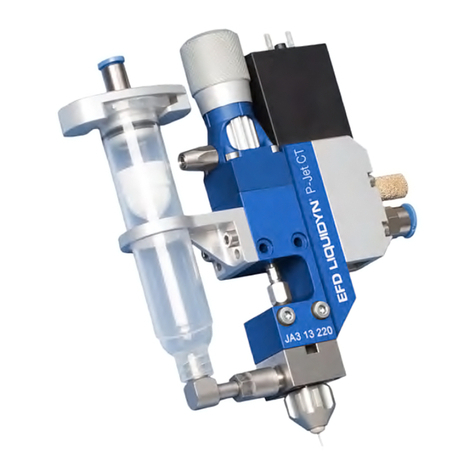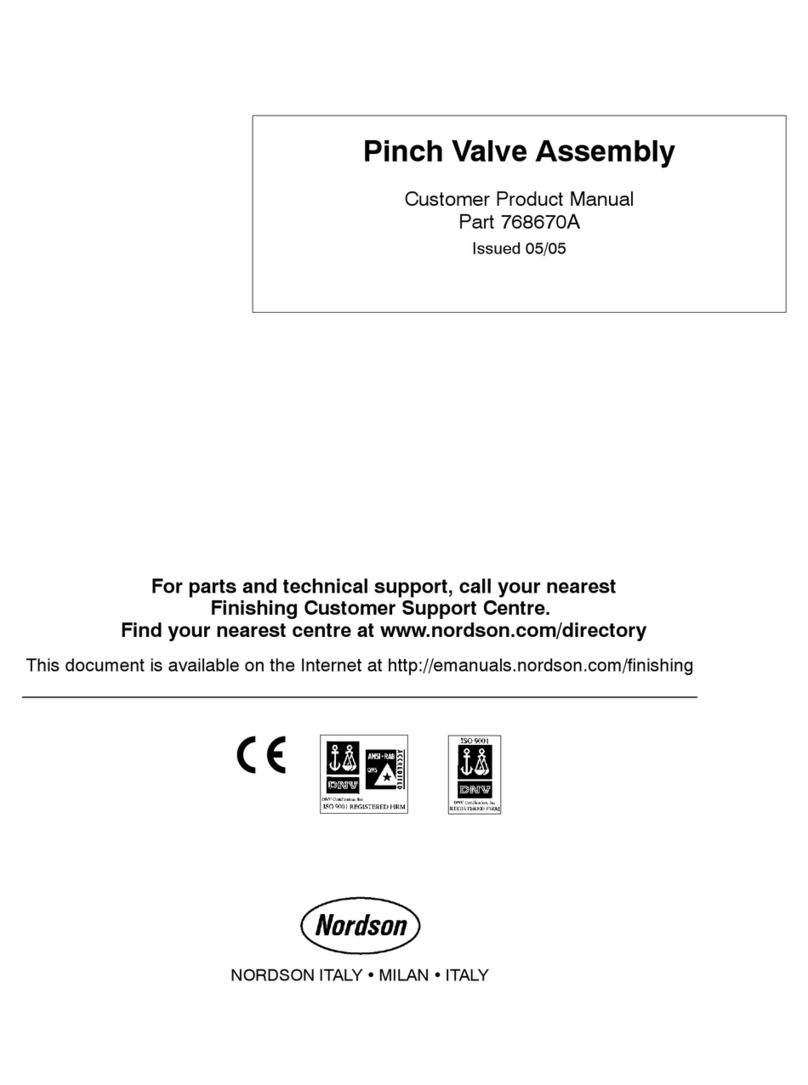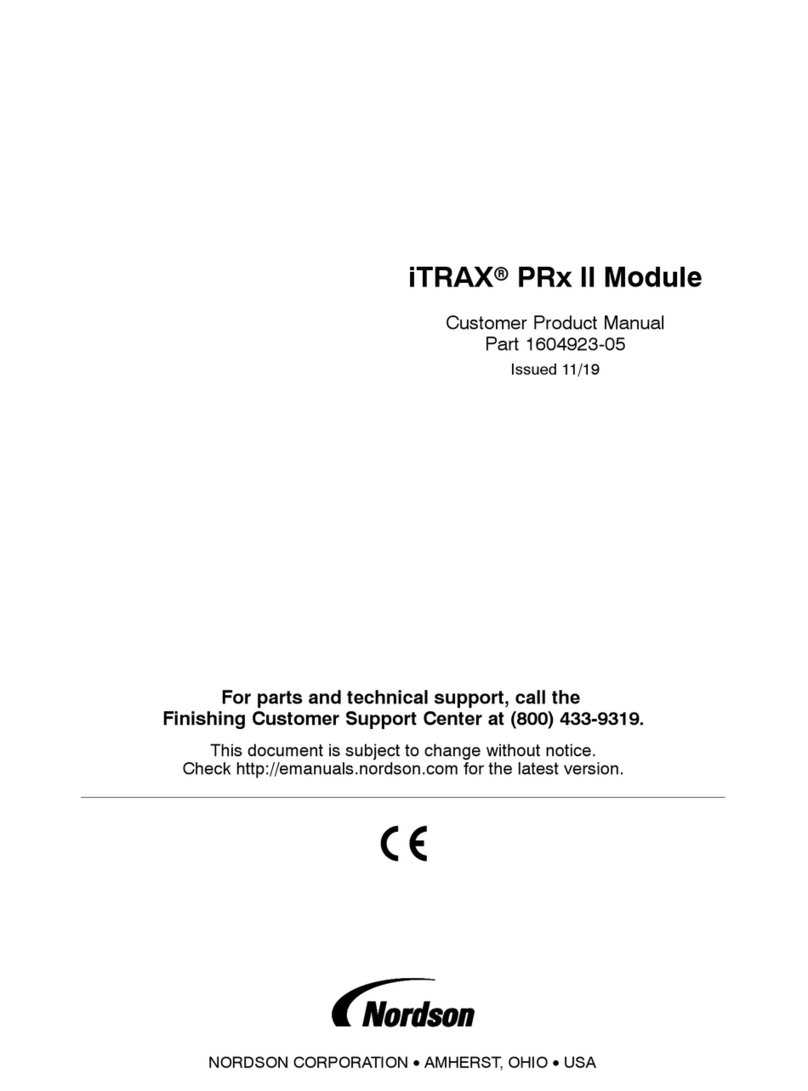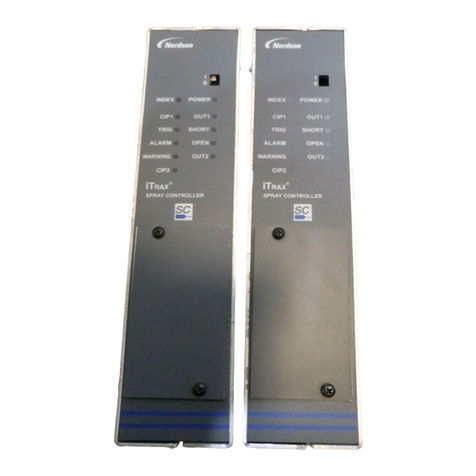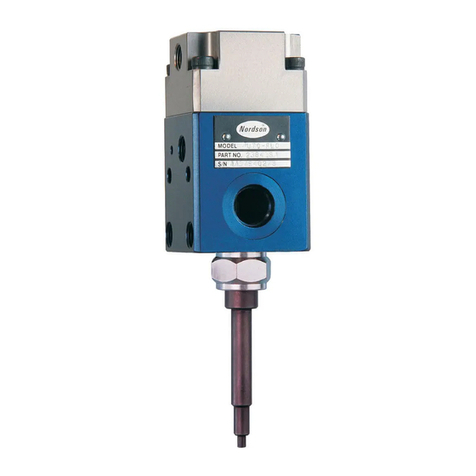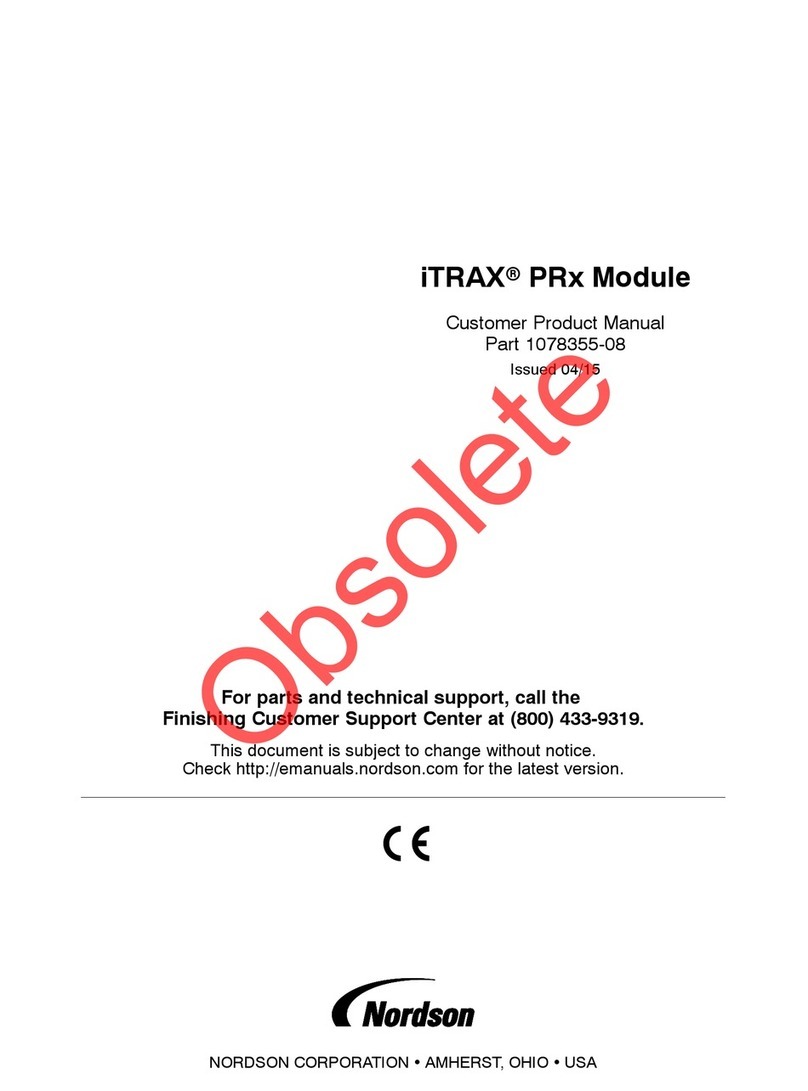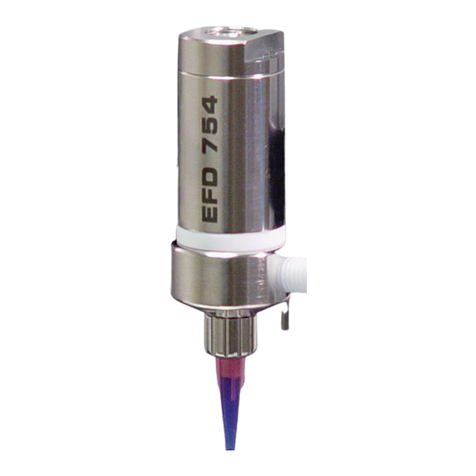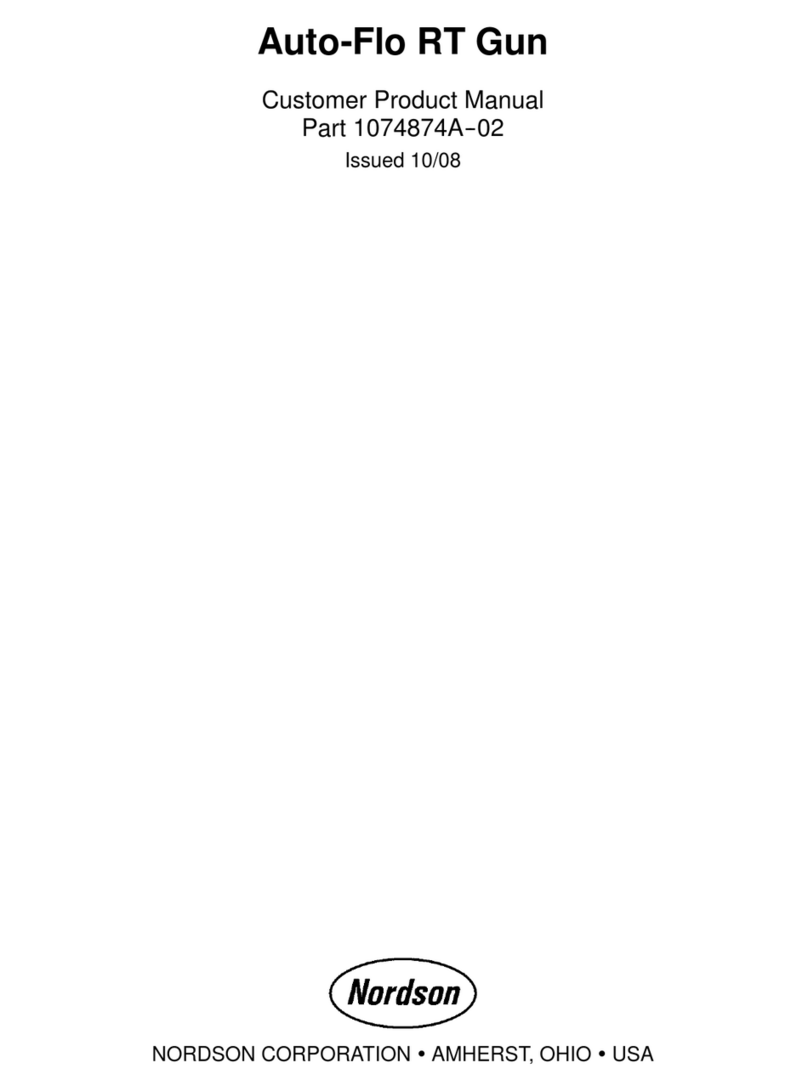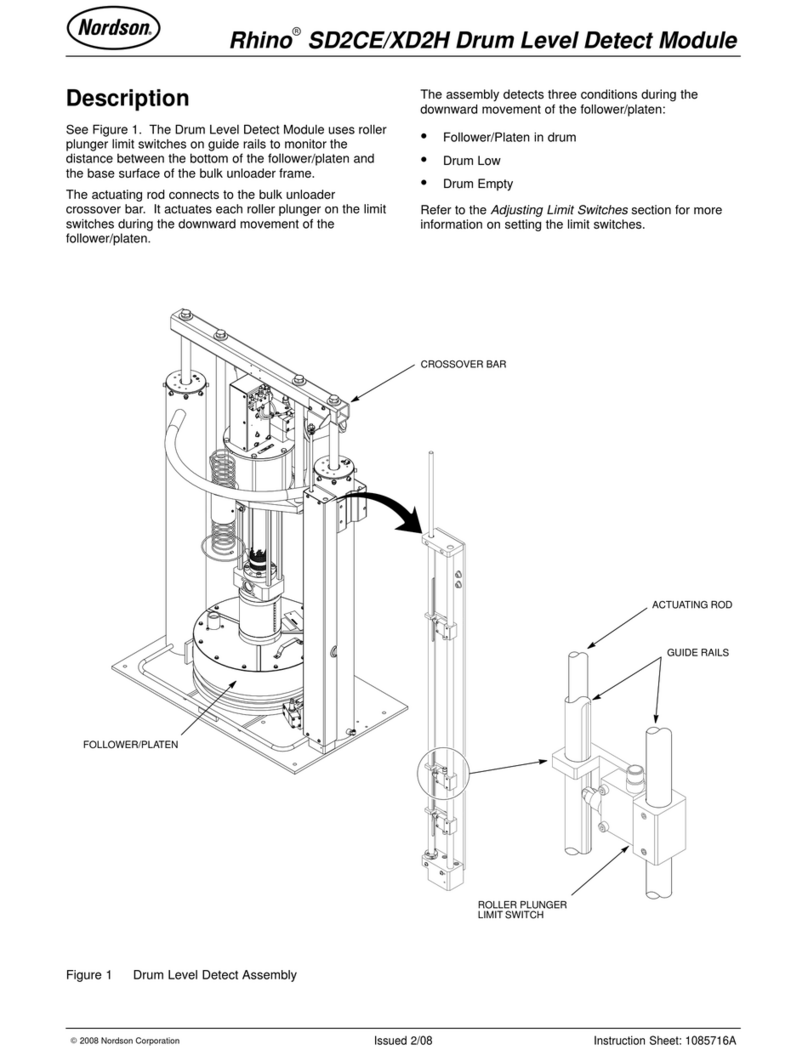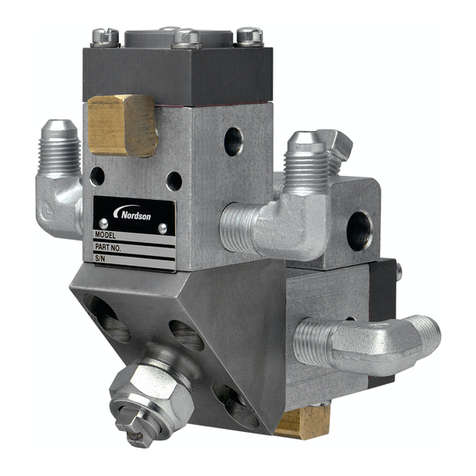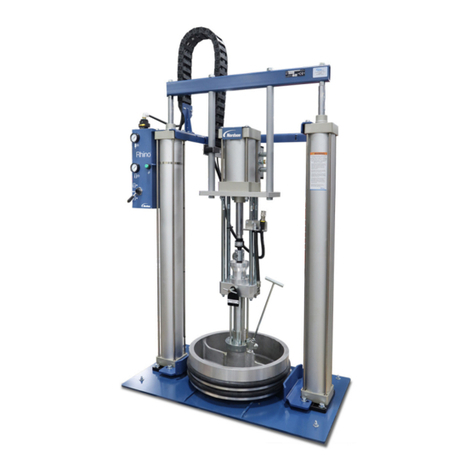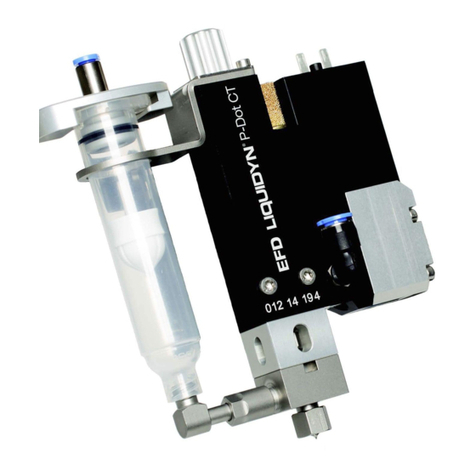
II Table of Contents
E1996 Nordson Corporation
All rights reserved
Manual 56--WM480--MA--02 WM 480
Issued 03/96
1. Intended Use 2-1.............................................
Unintended Use -- Example -- 2-1............................
2. Residual Risks 2-1...........................................
3. Introduction 2-2..............................................
Equipment Features 2-2....................................
4. Functioning 2-3..............................................
5. Front Side 2-5...............................................
6. Rear Side 2-5................................................
7. Mains Switch 2-6.............................................
8. Display 2-6..................................................
9. Keyboard (Programming) 2-6..................................
10. Keyboard (Valve Control) 2-6..................................
11. Connection Sockets 2-7.......................................
Photo cell Inputs 1, 2, 3 2-7..................................
Ground 2-7................................................
Machine Contact Input 2-7..................................
Encoder Input 2-7..........................................
Pressure Outputs P1 and P2 2-7.............................
Valve Outputs 1, 2, 3 2-7....................................
1. Transport 3-1................................................
2. Unpacking 3-1...............................................
3. Setting Up 3-2...............................................
4. Removing 3-2................................................
5. Storage 3-2..................................................
6. Disposal 3-2.................................................
7. Electrical Connections 3-3.....................................
Connection to Line Voltage 3-3...............................
Connection of Accessories 3-4...............................
8. Initial Set Up 3-4.............................................
ection 2
escription
ection 3
nstallation







